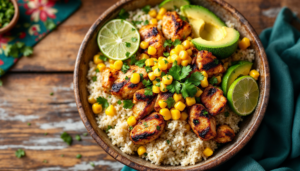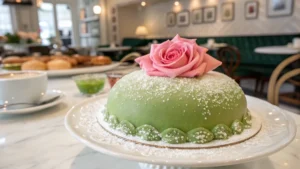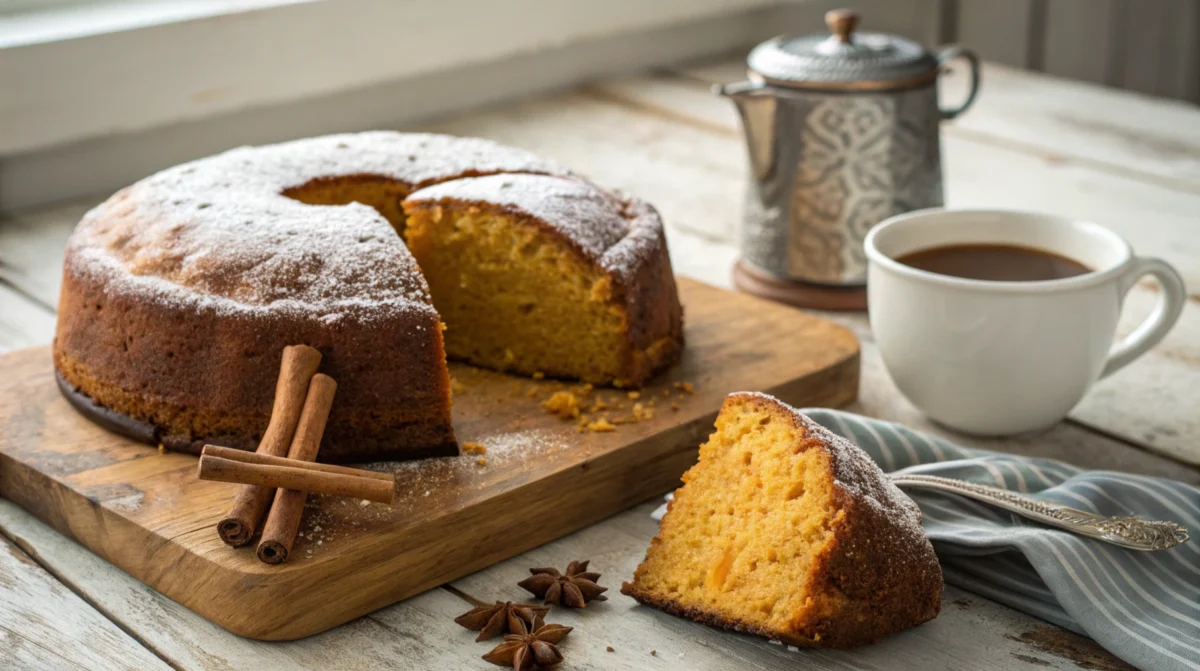
Introduction
Baking is an adventure filled with room for creativity, and sometimes, a simple swap can completely transform a dish. One such exciting substitution is using pumpkin puree instead of oil in cake mix. This switch isn’t just for fall lovers—it’s a healthier, flavor-packed alternative that can elevate your baking game all year long.
This article will explore the nutritional benefits of pumpkin, guide you through the substitution process, and share tips and recipes for using this versatile ingredient in your cakes. By the end, you’ll know whether pumpkin is the perfect oil substitute for your next baking project.
Why Substitute Pumpkin for Oil in Cake Mix?
Pumpkin puree is more than just a seasonal favorite; it’s a game-changer in the kitchen. Here’s why swapping out oil for pumpkin is a smart and flavorful move.
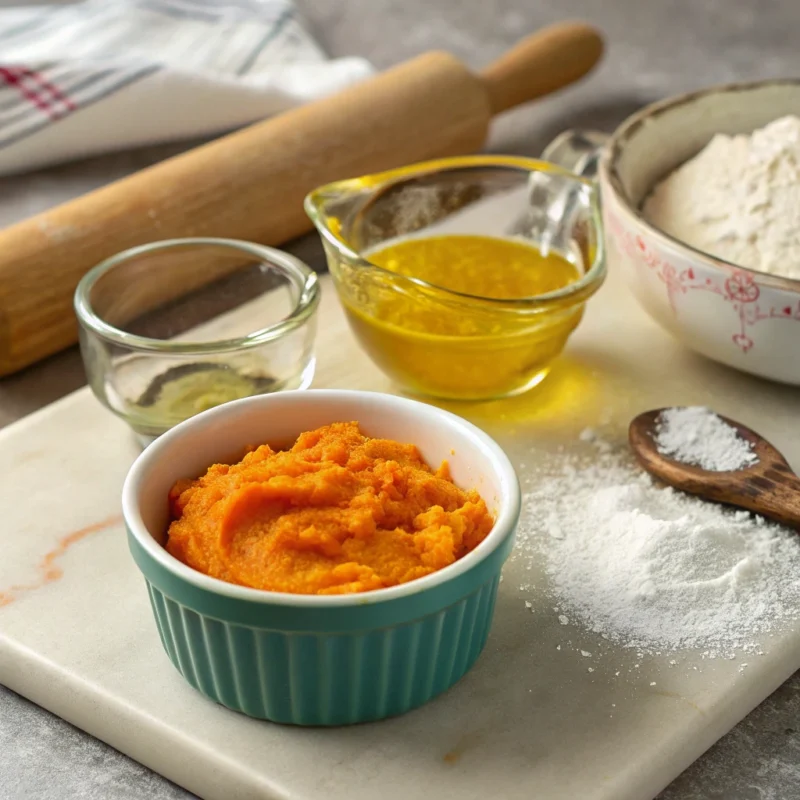
Nutritional Benefits of Pumpkin in Baking
Unlike oil, which is all fat and no nutrients, pumpkin puree is loaded with vitamins and minerals. It’s a rich source of vitamin A, vitamin C, and fiber, all of which contribute to overall health. Swapping oil for pumpkin reduces the calorie and fat content of your cake, making it a guilt-free indulgence. Plus, the fiber in pumpkin helps you feel fuller longer, turning a quick treat into a satisfying snack.
Did you know? A cup of oil has around 1,920 calories, while the same amount of pumpkin puree has only about 80 calories. That’s a massive calorie cut!
Can you use pumpkin instead of oil in cake mix Flavor Enhancement with Pumpkin Substitution
Unlike the neutral taste of oil, pumpkin adds its natural sweetness and earthy flavor to cakes. When combined with spices like cinnamon, nutmeg, or ginger, it creates a cozy, autumnal vibe that can make even a boxed cake mix feel gourmet.
Not only does pumpkin enhance the flavor, but it also improves texture. Cakes made with pumpkin puree are moist, tender, and melt-in-your-mouth delicious—something oil just can’t compete with.
Cost and Sustainability Considerations of Using Pumpkin
Using pumpkin is a win for both your wallet and the environment. High-quality oils, such as extra virgin olive oil or avocado oil, can be pricey. Pumpkin, especially canned varieties, is affordable and readily available.
From a sustainability perspective, opting for pumpkin reduces reliance on processed and imported oils, aligning with eco-conscious baking habits. Additionally, if you’re using fresh pumpkin, you’re cutting down on food waste—another point for the planet!
How to Use Pumpkin as an Oil Substitute
Swapping pumpkin for oil in cake mix is simple, but a few tricks can help you achieve the perfect results every time. Let’s dive into the practicalities of this substitution!
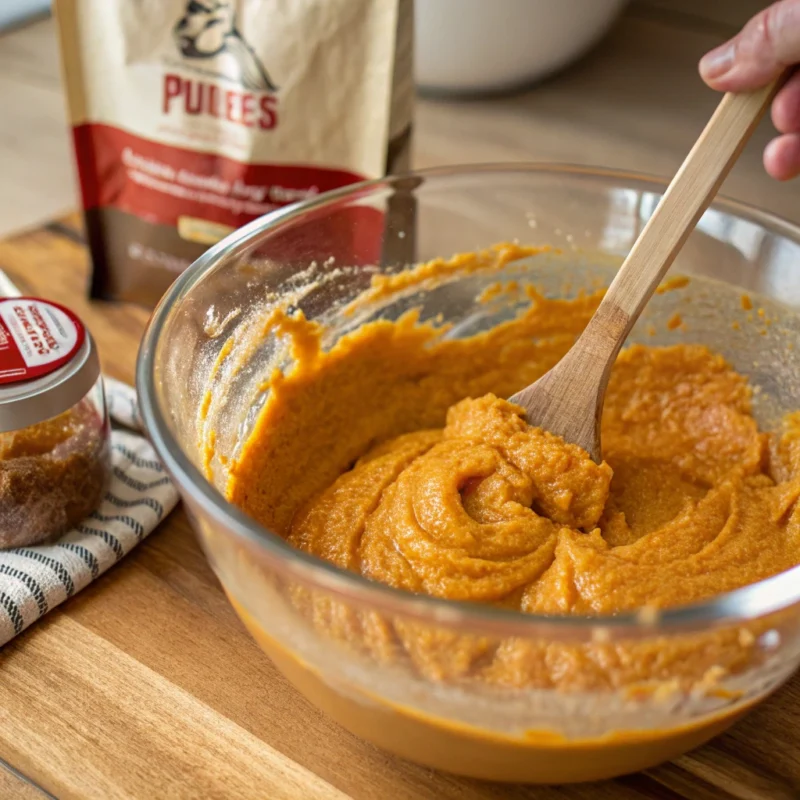
Understanding the Pumpkin-to-Oil Conversion Ratio
The golden rule for replacing oil with pumpkin is a 1:1 ratio. For instance, if your recipe calls for ½ cup of oil, you’ll use ½ cup of pumpkin puree instead. However, pumpkin is denser and less fatty than oil, which means your batter might need a slight adjustment.
If the batter feels too thick after adding the pumpkin, don’t fret! Add a splash of water, milk, or even an extra egg to loosen it up. Keep in mind that a little experimentation might be necessary to achieve the desired texture.
Pro Tip: If your recipe includes high-fat ingredients like butter or cream, pumpkin may already balance the richness, so you won’t need any additional tweaks.
Preparing Pumpkin for Baking (Canned vs. Fresh)
Choosing the right type of pumpkin puree is key to success. Both canned and fresh pumpkin work well, but each has its advantages.
- Canned Pumpkin: This is the easiest and most reliable option. Look for 100% pure pumpkin puree with no added sugars or spices. It’s consistent in flavor, texture, and moisture.
- Fresh Pumpkin: If you have extra time or pumpkins to spare, fresh puree is a fantastic option. Roast the pumpkin until tender, scoop out the flesh, and blend it until smooth. Make sure to remove any seeds or fibrous bits for a lump-free puree.
When using fresh pumpkin, you may need to adjust the moisture content. Fresh pumpkin is often lighter and less dense than canned, so blending it with a small amount of water can help.
Tips to Adjust Batter Consistency
Pumpkin puree is naturally thicker than oil, so it can slightly alter the consistency of your batter. Here’s how to keep things balanced:
- Start Small: Begin with the recommended 1:1 ratio, then gradually add more liquid if needed.
- Test the Texture: The batter should pour easily but still hold its shape. If it feels too stiff, mix in liquid a tablespoon at a time.
- Mind the Sugar: Pumpkin has natural sugars, so it may caramelize faster during baking. Lower the oven temperature by 10–15°F if your cakes tend to brown too quickly.
Pro Tip: Pair your pumpkin with a cake mix that complements its flavor, like spice or chocolate. These combinations let the pumpkin shine without overpowering the dish.
Pros and Cons of Using Pumpkin Instead of Oil
Using pumpkin instead of oil in cake mix comes with plenty of perks, but it’s not without its challenges. Let’s explore the advantages and potential drawbacks so you can decide if this swap is right for you.
Advantages: Health Benefits, Moisture, and Flavor
- Healthier Baking Option
Pumpkin is a low-fat, nutrient-rich alternative to oil. It’s packed with vitamins A and C, potassium, and fiber, which make your cakes a little healthier without compromising taste. By cutting down on calories and fat, you can indulge guilt-free. - Enhanced Texture and Moisture
Cakes baked with pumpkin are luxuriously moist and tender. Pumpkin’s natural water content ensures that your desserts don’t dry out, even if you store them for a few days. - Boosted Flavor Profile
Unlike oil, which is flavorless, pumpkin adds a subtle sweetness and an earthy richness. When paired with spices like cinnamon, nutmeg, or ginger, it creates a delightful autumn-inspired treat that feels gourmet.
Challenges: Texture and Density Issues
- Thicker Batter
Pumpkin is denser than oil, which can make your batter heavier. This might result in cakes that are slightly denser than their oil-based counterparts. While some people enjoy this texture, others might find it less appealing.Fix it: To lighten the batter, mix pumpkin with another substitute like applesauce or yogurt. This combination retains moisture without making the cake too heavy. - Overpowering Flavor
Pumpkin’s earthy taste may not complement all cake flavors. For instance, in delicate recipes like lemon or vanilla cake, the pumpkin can overshadow the primary flavor.Solution: Stick to recipes where pumpkin’s flavor naturally fits, such as chocolate, spice, or carrot cakes. - Baking Adjustments
Pumpkin’s natural sugars can cause your cake to brown more quickly than usual. This means you’ll need to keep a closer eye on it while baking.Pro Tip: Lower the oven temperature slightly and use a toothpick to check doneness. Cover the cake with foil if it starts to over-brown before the center is fully baked.
When to Skip Pumpkin Substitution
Pumpkin isn’t a one-size-fits-all solution. Avoid it in recipes that rely on oil’s neutral flavor and light texture, such as angel food cake or chiffon cake. In such cases, stick to lighter substitutes like applesauce or a mild oil.
By weighing the pros and cons, you’ll see that using pumpkin instead of oil in cake mix is an excellent choice for many recipes. Coming up, we’ll showcase some creative ways to bake with pumpkin and share mouthwatering recipes you can try at home!
Recipe Ideas Featuring Pumpkin Substitution
Using pumpkin instead of oil in cake mix is a fantastic way to create delicious, moist desserts that stand out. Here are a few mouthwatering recipes to get you started!
Pumpkin-Spiced Cake with Cream Cheese Frosting
This classic pumpkin-spiced cake is perfect for fall or any time you crave warm, cozy flavors.
- Start with a spice cake mix: Replace the oil with an equal amount of pumpkin puree.
- Add extra spice: Stir in a teaspoon of cinnamon, a pinch of nutmeg, and a dash of ginger for an aromatic twist.
- Top it off: Bake as directed, then frost with cream cheese frosting for the ultimate treat.
This cake is rich, flavorful, and perfect for sharing during the holidays or family dinners.
Chocolate Pumpkin Brownie
When chocolate meets pumpkin, you get fudgy, decadent brownies that are irresistibly moist.
- Swap the oil for pumpkin puree: Use a 1:1 ratio with your favorite boxed brownie mix.
- Enhance the flavor: Toss in dark chocolate chips or a sprinkle of cinnamon for a unique twist.
- Bake to perfection: Follow the box instructions but lower the oven temperature slightly to prevent over-browning.
These brownies are perfect for satisfying chocolate cravings while sneaking in some extra nutrients.
Gluten-Free Pumpkin Muffins
If you’re looking for a healthier breakfast or snack, these gluten-free muffins are a winner.
- Choose a gluten-free cake mix: Substitute oil with pumpkin puree to make it moist and flavorful.
- Add texture: Sprinkle pumpkin seeds on top before baking for a delightful crunch.
- Optional sweetness: Mix in a handful of raisins or chopped dates for a natural sugar boost.
These muffins are light, fluffy, and packed with fall-inspired goodness.
Bonus: Pumpkin in Pancakes, Waffles, and Quick Breads
Pumpkin isn’t limited to cake! Try adding it to pancake batter, waffle mixes, or quick bread recipes for a versatile touch. Its natural sweetness and moisture shine in almost any baked good.
For more delightful recipes, check out the Pumpkin Dump Cake Recipe on Makouri Recipes. It’s another creative way to bake with pumpkin and embrace its unique flavor
Expert Tips for Perfect Results
Baking with pumpkin instead of oil in cake mix can be a game-changer, but it requires a few tricks to get it just right. Follow these expert tips to ensure your cakes are moist, flavorful, and perfectly baked every time.
Balancing Moisture Levels for Optimal Baking
Pumpkin puree is naturally moist, which can sometimes make batter too thick or dense. To strike the perfect balance:
- Add a splash of liquid: If your batter feels overly thick, mix in a tablespoon or two of milk, water, or even orange juice. This adjustment keeps the cake light without sacrificing moisture.
- Check the consistency: Aim for a batter that flows easily but isn’t runny. If it’s too stiff, your cake might turn out heavy.
Pro Tip: If your cake mix includes pudding, reduce the amount of pumpkin slightly to avoid an overly wet texture.
Enhancing Pumpkin’s Flavor with Spices
Pumpkin has a mild, earthy sweetness that pairs beautifully with warm spices. To make your cake pop:
- Add your own spice blend: Cinnamon, nutmeg, ginger, and cloves are fantastic choices. A pinch of cardamom can also add a unique twist.
- Match the mix: For neutral-flavored cake mixes like vanilla, boosting the spice profile ensures the pumpkin doesn’t taste bland.
These additions create a warm, aromatic cake perfect for any occasion.
Pairing Pumpkin with Other Substitutes
Sometimes, combining pumpkin with other substitutes can improve the texture or flavor of your baked goods. For instance:
- Mix with applesauce: For a lighter, fluffier result, replace half the pumpkin with unsweetened applesauce.
- Add yogurt or sour cream: These ingredients add creaminess and help balance the batter’s thickness.
Experimenting with combinations can open up a world of possibilities, ensuring your cakes suit your taste and texture preferences.
By keeping these tips in mind, you can confidently bake with pumpkin and enjoy delicious, moist cakes every time. Up next, we’ll address common questions about this unique substitution and provide answers to help you bake like a pro!
Frequently Asked Questions
Baking with pumpkin instead of oil in cake mix raises some common questions. Let’s address them to clear up any confusion and ensure your baking is a success!
Can I substitute pumpkin for oil in cake mix?
Absolutely! Pumpkin puree is a fantastic substitute for oil in cake mix. The general rule is to use a 1:1 ratio—replace every cup of oil with a cup of pumpkin puree. Not only does this swap reduce calories and fat, but it also adds moisture, vitamins, and a natural sweetness to your cake.
Can you replace oil with pumpkin in baking?
Yes, you can replace oil with pumpkin in almost any baking recipe. Pumpkin works especially well in cakes, muffins, brownies, and quick breads, where its earthy flavor and thick texture enhance the final product. Just remember to adjust the batter consistency if it feels too thick by adding a splash of water or milk.
What is a good substitute for oil in cake mix?
Pumpkin puree is one of the best substitutes for oil in cake mix because it adds both flavor and moisture. Other great options include:
- Unsweetened applesauce: Lighter in texture but equally effective.
- Greek yogurt: Adds creaminess and protein.
- Mashed bananas: Ideal for tropical or fruity desserts.
Each substitute has its unique benefits, but pumpkin stands out for its rich flavor and nutrient boost.
How does pumpkin affect baking?
Pumpkin impacts baking in several positive ways:
- Moisture: It keeps cakes tender and prevents them from drying out.
- Flavor: Its natural sweetness and subtle earthiness enhance the overall taste.
- Density: Pumpkin can make baked goods slightly heavier, which works well in rich recipes like brownies or spice cakes.
- Nutrition: Packed with fiber, vitamins, and minerals, it’s a healthier alternative to oil.
However, pumpkin’s natural sugars can cause baked goods to brown faster, so keep an eye on your oven and consider lowering the temperature by 10–15°F.
Creative Uses for Pumpkin in Baking
Pumpkin isn’t just for cakes—it’s a versatile ingredient that can elevate a wide range of baked goods. Whether you’re aiming for something indulgent or healthier, there’s no limit to what this ingredient can do. Let’s explore some creative ways to use pumpkin instead of oil in cake mix and beyond.
Beyond Cakes: Pumpkin in Cookies, Muffins, and Breads
- Pumpkin Cookies: Swap oil for pumpkin in your favorite cookie recipe to create soft, chewy treats. Add chocolate chips or cranberries for extra flavor.
- Quick Breads: Combine pumpkin puree with warm spices in a banana bread or zucchini bread recipe for a moist, autumn-inspired loaf.
- Pumpkin Muffins: Use pumpkin puree instead of oil in muffin recipes for a dense yet tender texture. Top with pumpkin seeds or oats for added crunch.
Creating a Homemade Pumpkin Spice Blend
If you’re baking with pumpkin, why not amplify the flavors with your own spice mix? Combine:
- 2 teaspoons of cinnamon
- ½ teaspoon each of nutmeg, ginger, and cloves
This blend pairs perfectly with pumpkin in cakes, muffins, pancakes, and more.
Pro Tip: Store extra spice mix in an airtight container for future baking adventures.
Pumpkin for Breakfast and Healthy Snacks
- Pancakes and Waffles: Add pumpkin puree to your batter for a nutrient-rich breakfast with a hint of fall flavor. Pair with maple syrup for a sweet finish.
- Energy Bars: Mix pumpkin with oats, honey, and nuts to create homemade, no-bake energy bars. These make for a quick, healthy snack on the go.
- Pumpkin Smoothies: Blend pumpkin puree with yogurt, cinnamon, and a banana for a creamy, nutrient-packed smoothie.
For more delightful ways to use pumpkin, check out Makouri Recipes’ Pumpkin Dump Cake Recipe. It’s a simple yet delicious way to enjoy this versatile ingredient.
Final Thoughts and Pro Tips
Baking with pumpkin instead of oil in cake mix is a simple, flavorful way to create healthier desserts while adding a unique twist to your recipes. Whether you’re a seasoned baker or just experimenting, pumpkin’s versatility makes it a valuable addition to your pantry.
Is Pumpkin the Perfect Oil Substitute?
Pumpkin is one of the best substitutes for oil, offering more than just moisture. It enhances texture, infuses natural sweetness, and packs a nutritional punch with its vitamins and fiber. While it works beautifully in many recipes, it’s best suited for rich or spiced baked goods where its earthy flavor can truly shine.
However, pumpkin isn’t a universal fix. For lighter cakes or recipes with delicate flavors, it’s worth exploring other substitutes like applesauce or yogurt.
Pro Tips for Baking Success with Pumpkin
- Stick to the Ratio: Use a 1:1 substitution for oil, but adjust with liquids if the batter feels too thick.
- Pair with Spices: Elevate pumpkin’s natural flavor with cinnamon, nutmeg, or ginger for a cozy, aromatic finish.
- Monitor Baking Time: Pumpkin’s natural sugars can brown baked goods faster, so check for doneness and lower the oven temperature if needed.
- Experiment Boldly: Don’t limit pumpkin to cakes—try it in cookies, brownies, muffins, and even breakfast recipes like pancakes and waffles.
Final Tip
If you’re new to using pumpkin in baking, start with a simple recipe like a spice cake or brownies. These are forgiving and allow pumpkin’s flavor and texture to shine. For more inspiration, explore creative recipes like the Pumpkin Dump Cake Recipe on Makouri Recipes.
With these insights and tips, you’re ready to make the most of this versatile ingredient. Happy baking! 🍰
